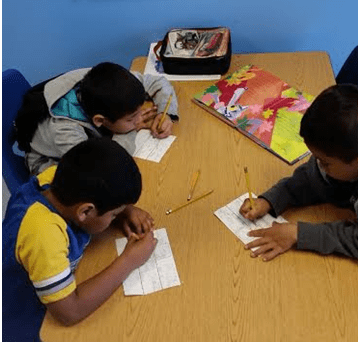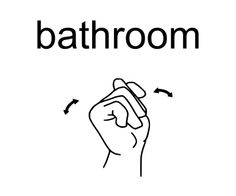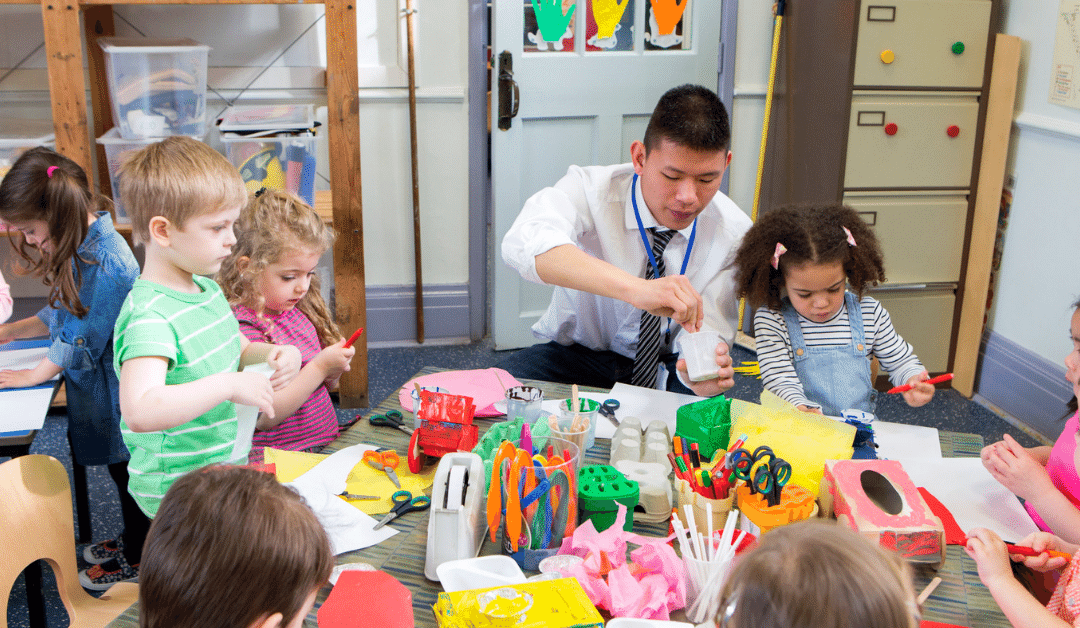We had an amazing conversation with members of our SLP Impact Community where veteran SLPs shared speech and language therapy techniques they use to continue to have great results even as their caseloads and workloads are increasing. These are not suggestions to address specific disorders. These are suggestions about how to structure your days, groups, and sessions.
Speech and language therapy techniques that are successful take into account the way the group is organized, lean on peer interactions and student self-assessment, and employ video for modeling and parent or teacher interaction.
Speech and Language Therapy Techniques For You to Use With Your Groups
You will notice that each one of these ideas targets work that we are already expected to do so we don’t have to add anything new to our day. We made a super cool infographic for you to remember everything. You can download it at the end of this post and use it as you read through this conversation.
1. Combine your Articulation and Language Therapy
Ditch the sound cards and highlight the sounds on a page in a book.
The first and most powerful suggestion is to combine your articulation and language therapy. And I will go as far as to say to ditch your articulation cards. Nowadays it’s rare that I actually do articulation therapy unless it is an older student who is just focusing on specific sounds like R, S, and L.
Language intervention, like using storybooks, can be tailored so that you are using sounds from the books or pulling the sounds out of those homework packets. Here’s a quick example: you could photocopy a page from a book and highlight the sounds they’re focusing on. Better yet, ask the teacher what their reading level is and choose books from the school’s literacy library that are around that level.
This way you can see more kids in the same group that have different goals and overlap their classroom needs at the same time.
2. Flip Your Group and Individual Therapy Model
Don’t only save your individual sessions for the students with the greatest challenges. Chose artic students you are most likely to dismiss and target their sounds.
This suggestion goes out to all of you who are just ending a school year with 50, 60, 70+ speech kids on your speech pathology caseload. Typically, most SLPs save individual therapy for the odd grade, the less common disorder like disfluency, or the behavior concern.
What I’m suggesting is that you save at least one of your individual sessions for the arctic guy that needs to get out of there. Have him come in to target the remaining sounds with hundreds upon hundreds of repetitions.
If you can dismiss him, you clear a space in your schedule. So it’s a lot of bang for your buck when you get an extra half hour to 60 minutes back of your week. And you got a kid off your caseload!
3. Let the Client Keep Their Own Data
Have the child use clickers and tally charts and hand in their data rather than you keeping it.

Number 3 is about letting your client keep their own data. We have started having children mark their own work with hashmarks or checks based on the goals they are working on. And don’t send their work home every day either. Keep it and staple it all together and send it with their 9-week progress note. This way you can add their tallies up for your data.
One that I saw that was brilliant was a sound chart that was then connected to their sticker chart. It was a 10×10 grid being marked by the child for all the times they were saying /s/ in a session. They got their sticker at the end if the chart was complete.
A great way to do this easily is to use clickers that you can buy online in packs of 4-6. The students love to keep their tallies and have no idea that they are also taking your data!
4. Have a Child Repeat Their Goals
No human is successful if they don’t know what they are working towards. Conclude or begin each session by having a child tell you their goals. If you stopped a child in the hall and asked them what they were working on in speech class, they should be able to say something like: “my S sounds.”
It goes without saying, if you don’t know what your goal is, there’s absolutely no way you’re going to get it. A child should be able to walk into your room and tell you what they’re working on.
How many of you have been in front of a teacher or parent who asked the child what they did in your class and they said “play games” ?!
The quickest way to do this is to add Goal Recognition to the beginning or the end of the session. In the beginning you can quiz them all about what they are focusing on. After a while, their buddies know the answer as well as they do. At the end of a session, you can have them tell you their goal before they get their reward.
5. Record the Child with Your Phone and Have Her Watch It
Kids love making videos. Record them producing the sound so they can see and hear how accurate they are.
Kids are motivated by videos, right? Record them saying a sound they are struggling with. Then, hold your screen next to your head, and have them watch the similarities or differences between your productions and theirs.
Speech sound production can be frustrating so this also an opportunity to be silly and have some fun with it. There are a hundred apps out there where you can change the image like putting a rainbow wig on them. Or if you are brave, you can have them change your picture too!
I know we said 7 speech and language therapy techniques but I want to throw a bonus one into this video section. With the right permissions granted, showing the child producing a sound successfully to their parents or teachers can go a long way. Especially if you are in an IEP meeting trying to describe what goals you are working on.
6. Teach Compensatory Strategies

If a child is highly unintelligible, teach him to talk with his hands. He can point, scribble, or pull you in a direction. Some kids do this naturally, but most do not.
The sixth best speech and language technique is to teach compensatory strategies. If you have a child who’s unintelligible, have them start signing, pointing, gesturing, or leading you by the hand to what they want.
This is more than just improving how they are understood, this is letting them experience what successful communication feels like so they know what direction they are working in.
7. Use Peer Models to Practice Without an Adult
Children learn from each other better than they do from us. While you focus on one child in a group, have them practice with a peer partner.
Lastly, do you use peer models to practice without an adult? The truth is that kids learn as much or more from their friends than they do from us. Giving them the ability to share and work with each other, promotes learning in a very, very big way.
What this looks like in speech therapy is that when you focus on one child and their goals, have the others pair up to demonstrate what they should be working on. Encourage them to congratulate each other if they are successful.
That wraps it up! And here we listed all seven speech and language therapy techniques for you to hang up in your therapy room.






These are great techniques and I plan to implement most of them. However, please do not use your personal cell phone to record students. We live in a very litigious time and using your own cell phone for anything related to students is highly frowned upon in my district. If you have an iPad that is not your personal device, use that!
Good point on the cell phone. I use a free program that you can download to your computer called Audacity. The phone is convenient but you are right that you have to transfer the content and delete it even if it is allowed where you work.
Thank you so much for hands-on, practical ideas. Love this cite!